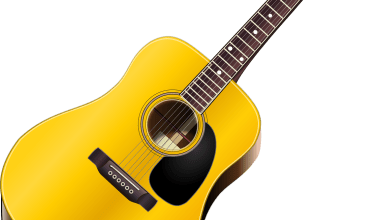If you’re an aspiring musician or part of a band, getting noticed in the music industry can feel like climbing a mountain. One of the best tools to help you reach the summit is a well-crafted music press package. This guide will walk you through everything you need to know about creating a standout music press package, step by step. Let’s dive in!
What is a Music Press Package?
A music press package, also known as an electronic press kit (EPK), is essentially your music resume. It’s a professional and concise way to showcase who you are, what you do, and why people should care about your music. Whether you’re trying to land gigs, attract media attention, or connect with record labels, a music press package can open doors.
Think of it as your first impression. And as the saying goes, you only get one chance to make a good one. With the right elements in place, your music press package can do the heavy lifting for you.
Why Do You Need a Music Press Package?
Imagine this: a talent booker hears your song on a playlist and wants to know more about you. What do they do? They search for your press package. If you have one ready, you instantly look professional and serious about your career.
Your music press package saves time for the people you want to impress. Instead of digging through social media or incomplete websites, they can find all the key details in one place. This not only increases your chances of getting noticed but also makes you look polished and prepared.
Key Elements of a Music Press Package
1. Bio
Your bio is your story—and stories are powerful. Keep it engaging but concise. Share what makes your journey unique. Include milestones like awards, collaborations, or significant performances. Remember, readers need to connect with you as a person, not just a musician.
2. Music
This part might seem obvious, but it’s critical. Showcase your best songs or tracks that represent your style. Use platforms like SoundCloud, Spotify, or Bandcamp to embed playable links in your press package. Make it easy for people to hear your sound instantly.
3. Photos
High-quality photos are non-negotiable. Include a mix of professional headshots, live performance shots, and album artwork. Visuals play a big role in forming first impressions, so make sure they’re on point.
4. Press Coverage
Have you been featured in blogs, magazines, or radio shows? Highlight those pieces here. If you don’t have press coverage yet, don’t worry. You can leave this section out for now and update it later as you gain more exposure.
5. Contact Information
Make it easy for people to get in touch with you. Include your email, phone number, and social media handles. A booking agent or journalist shouldn’t have to dig to find you.
Your social media profiles are often the next stop for anyone interested in your music. Include clickable links to platforms like Instagram, TikTok, or Twitter. Show consistency between your press package and your online presence.
7. Videos
If you have music videos, live performance clips, or interviews, add them to your music press package. Videos help showcase your personality and performance style in a way words or photos can’t.
8. Tour Dates
If you’re actively performing, include a list of upcoming gigs. This shows that you’re serious about your career and helps promoters see you in action.
9. One-Sheet Summary
For those who just want a quick overview, a one-sheet summary is perfect. Include your bio, best songs, and key achievements. Think of it as the TL;DR version of your music press package.
How to Create a Music Press Package
Step 1: Write a Captivating Bio
Start with the basics. Who are you? What inspires your music? Why should people listen to you? Add a personal touch and avoid making it sound too formal. Use simple language that connects with readers.
Step 2: Choose Your Best Tracks
Select 3-5 songs that best represent your sound. Quality matters more than quantity here. Make sure these tracks are well-produced and reflect your unique style.
Step 3: Invest in Professional Photos
Hire a professional photographer if your budget allows. If not, make sure the photos you include are well-lit, high-resolution, and visually appealing. A smartphone with a good camera can work if used creatively.
Step 4: Gather Press Mentions
Even a small blog mention can boost your credibility. Compile all your press coverage into a neat list or portfolio. This builds your reputation and helps industry professionals take you seriously.
Step 5: Design a Clean Layout
Use tools like Canva, Adobe Spark, or even Google Slides to design your press package. Keep the design clean, simple, and aligned with your brand image. Focus on readability.
Step 6: Make It Digital
A music press package is most effective when it’s easily shareable. Save it as a PDF or create a dedicated section on your website. Include clickable links for easy navigation.
Common Mistakes to Avoid
Mistake 1: Overloading with Information
Your music press package should be concise. Avoid overwhelming readers with too much text or irrelevant details.
Mistake 2: Using Low-Quality Media
Blurry photos and poor-quality audio tracks can ruin your chances of making a good impression. Always aim for high-quality visuals and sound.
Mistake 3: Forgetting to Update
An outdated press package is almost as bad as not having one. Make it a habit to update your press package regularly with new music, photos, and achievements.
Wrapping It Up
Creating a music press package might seem like a lot of work, but it’s a crucial step in building your music career. Think of it as an investment in your future. With a well-crafted music press package, you’ll be ready to impress the right people and seize the opportunities that come your way.
So, what are you waiting for? Start building your music press package today. The music industry is competitive, but with the right tools, you can stand out and make your mark.
For further reading, explore these related articles:
For additional resources on music marketing and distribution, visit DMT Records Private Limited.






